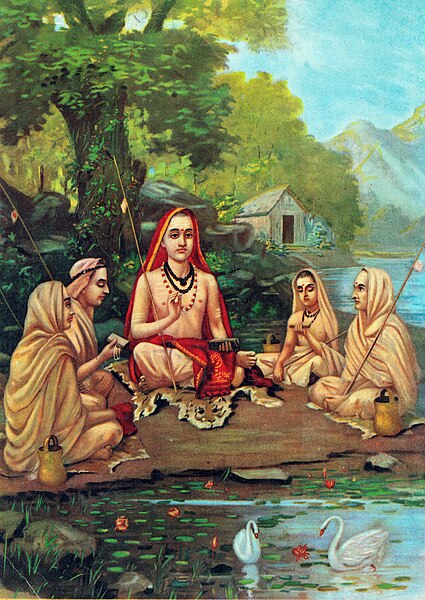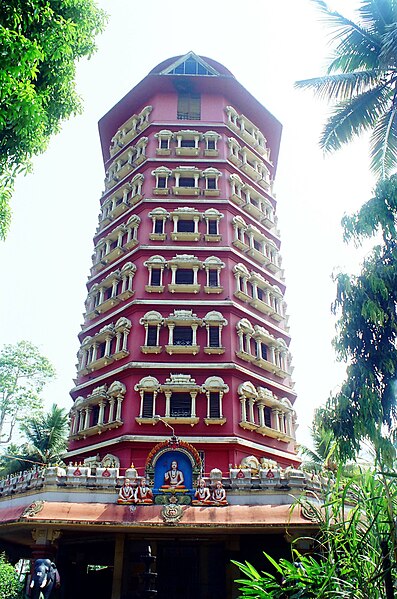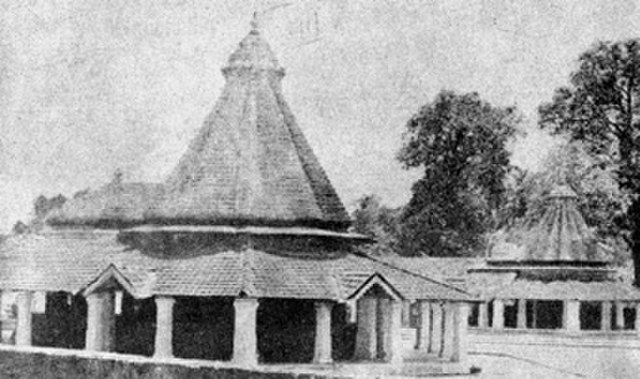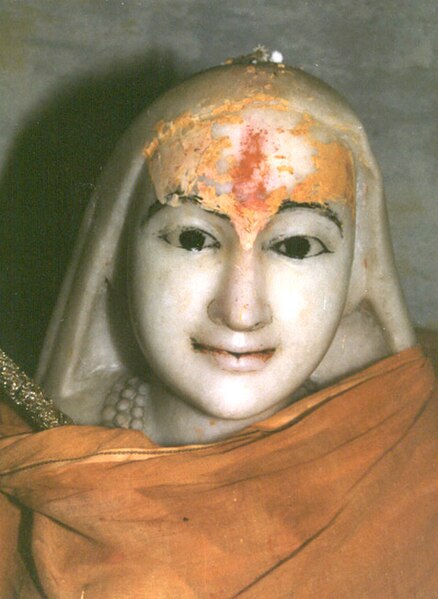Adi Shankara, also called Adi Shankaracharya, was an Indian Vedic scholar and teacher (acharya) of Advaita Vedanta. Reliable information on Shankara's actual life is scanty, and his true impact lies in his "iconic representation of Hindu religion and culture," despite the fact that most Hindus do not adhere to Advaita Vedanta. He is seen as "the one who restored the Hindu dharma against the attacks of the Buddhists and in the process helped to drive Buddhism out of India." Tradition also portrays him as the one who reconciled the various sects with the introduction of the Pañcāyatana form of worship, the simultaneous worship of five deities – Ganesha, Surya, Vishnu, Shiva and Devi, arguing that all deities were but different forms of the one Brahman, the invisible Supreme Being.
Painting of Adi Shankara, exponent of Advaita Vedanta with his disciples by Raja Ravi Varma
Adi Sankara Keerthi Sthampa Mandapam, Kalady, Kochi
The birthplace of Adi Shankara at Kalady
Murti of Shankara at his Samadhi Mandir, behind Kedarnath Temple, in Kedarnath, India
In Indian religions and society, an acharya is a preceptor and expert instructor in matters such as religion, or any other subject. An acharya is a highly learned person with a title affixed to the names of learned subject. The designation has different meanings in Hinduism, Buddhism and secular contexts.
Image of Āchārya Kundakunda, author of Jain texts like Pancastikayasara, Niyamasara





